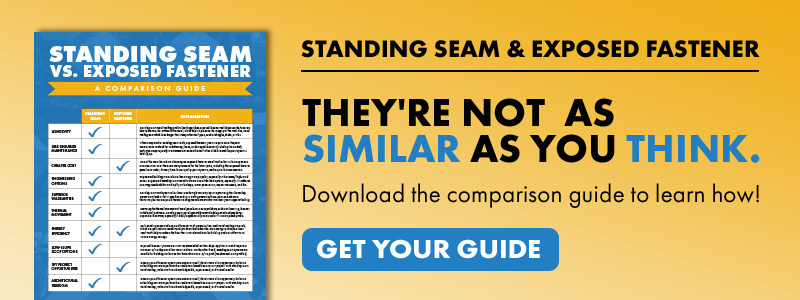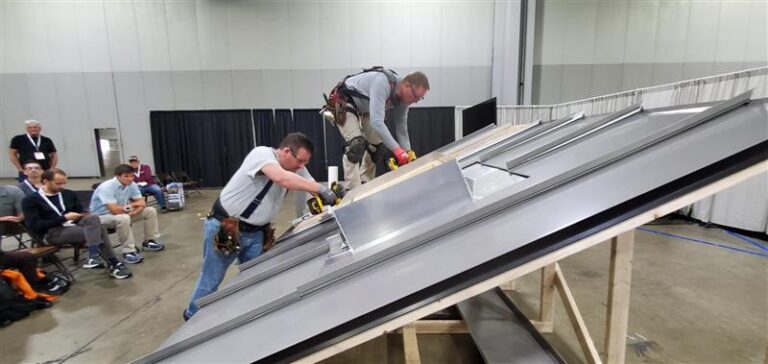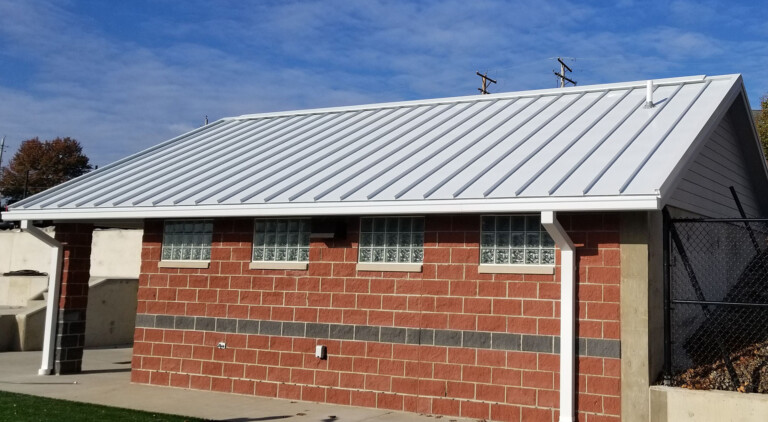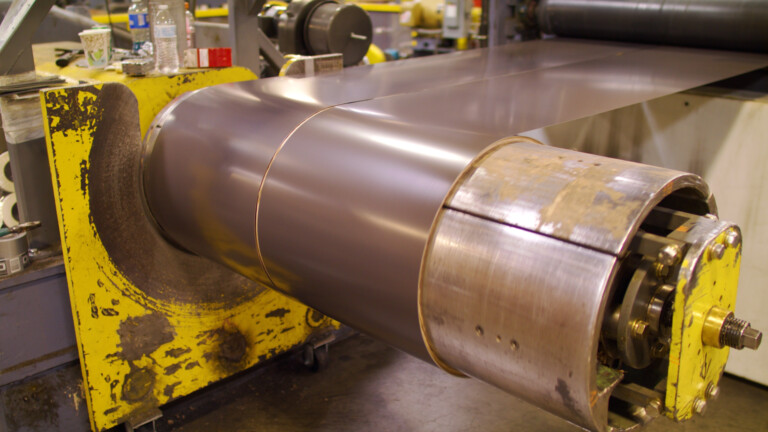What Are Metal Roofing Clips? Definitions, Types, & Comparisons
Clips are an integral part of most standing seam metal roofing and wall systems, but there are distinct uses, types, pros, and cons of clips to know about before installation.
How much do you know about what clips should be used with the specific metal roofing system you’re installing? Did you know that using the wrong clip can make or break the entire metal roof?
It’s true: Something as small as a clip can have a significant impact on the performance and overall integrity of a roof. That’s why it’s essential to know what a metal roofing clip actually does and the different types available for various panel styles.
At Sheffield Metals, we work with roofing contractors every day to ensure their teams install the right clips during every project. In fact, we even offer a full line of accessories (including clips) that we recommend using with our metal sheet and coil, which is why we see the importance of educating you about clips.
In this article, expect to discover:
- What a metal roofing clip is
- The types of clips
- Popular clip manufacturers
- Advantages and disadvantages of using a system that requires clips
What Are Metal Roofing Clips?
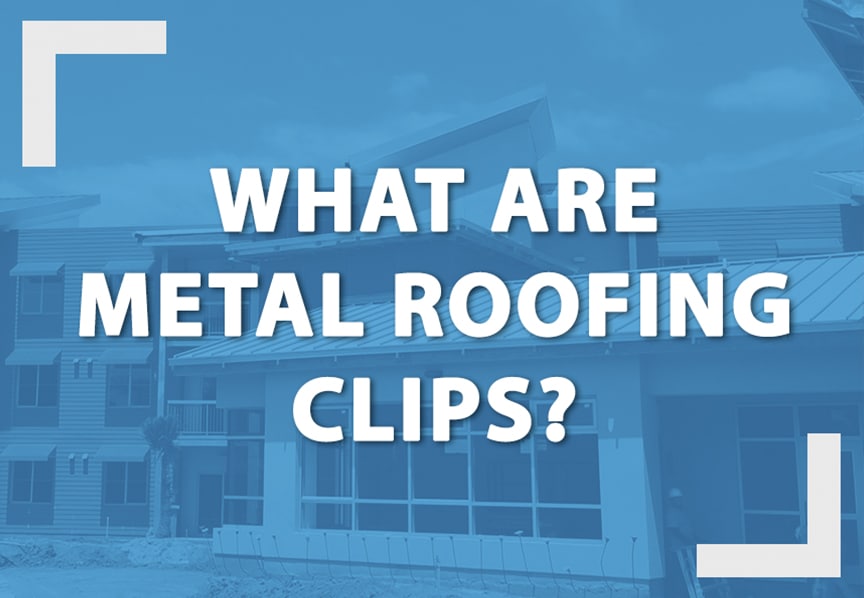
To begin, let’s define a clip: It’s a concealed anchor that attaches a metal panel to the substrate (roof deck or other material beneath the metal panels) with the use of fasteners. Clips are sometimes referred to as cleats as well.
Clips can come in a variety of metal materials and gauges, including:
- Galvalume®
- Galvanized steel
- Stainless steel
- Copper
- Aluminum
Galvalume and galvanized clips tend to be the most widely used in the industry. However, stainless steel clips are recommended for use in coastal applications and with zinc and copper panels. Depending on the type of metal panel system, clips can fit a wide variety of metal gauges, usually ranging anywhere between 26 and 18 gauge. Or, clips can come in a combination of two different gauges for two-piece clip systems. Always make sure the clip being used on your roof (or your customer’s roof) adheres to the manufacturer’s recommendations and testing for your roofing type; especially in regards to potential dissimilar metals, location (specifically bay, marsh, and other coastal applications), and profile.
For the purposes of this article, we are focusing mainly on clips for standing seam metal roofing systems, but clips can be used as an attachment anchor for various other construction and roofing materials, including:
- Wall systems
- Metal tile systems
- Bermuda panels
- Flat-lock panels

Clips and Engineering
We are often asked if clips are engineered, and the answer is: Kind of.
What is referred to as an “engineered clip” is a clip specified for use in an engineered metal roofing system, which is tested to follow the strict guidelines and industry standards. Just because a clip is used in engineering, it still has to be installed per the manufacturer’s recommendations or engineering report (i.e., clip spacing, fastener amounts, and types) for the engineering to be valid.
On the other hand, there are UL-rated clips, which are used in a UL-rated construction number. However, that doesn’t mean that a clip not bearing the UL stamp has not been used in a UL-tested system.
Beyond that, often times the clip being used has not been tested within a metal roof assembly, meaning there is not engineering on the clip or the system. This will vary by panel system and manufacturer. For standing seam applications, we recommend using a system that has a clip interface as well as using a system that has been tested together whenever possible.
Check with the manufacturer or supplier for further information about the engineering associated with the clip(s) you’re interested in.
Types of Metal Roofing Clips
You might see a clip and think it just looks like a piece of metal that, once installed, you’ll never see again. That’s partially true, but there are actually numerous different types of clips that work and perform differently. In this section, we’ll dive deeper into the five most common clip categories.
To reiterate, how a clip performs is a direct reflection of how well the manufacturer’s requirements and recommendations are followed by installers.
Expansion and Contraction Clips
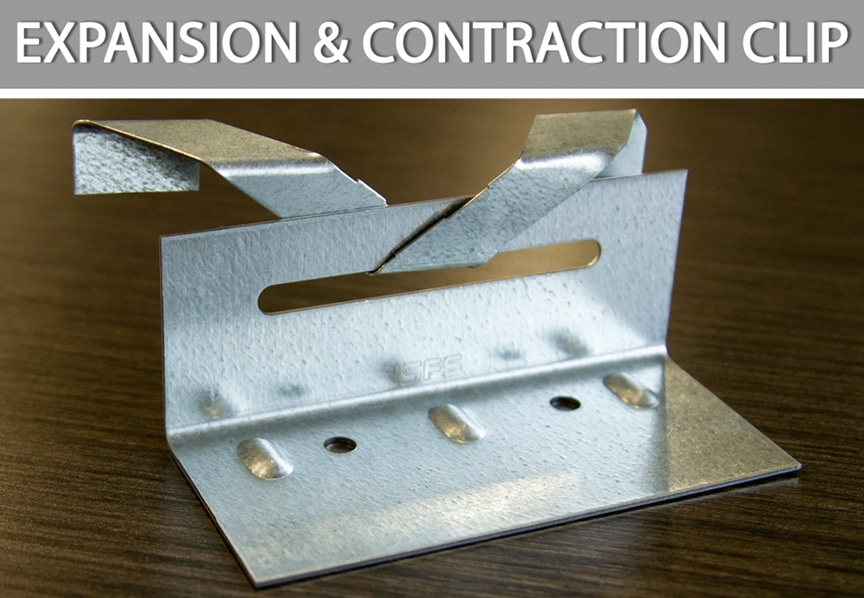
What it is: An expansion and contraction clip is a metal roofing clip that is fastened to the deck and has a movable, sliding piece that attaches to the male leg of the panel before seaming occurs, which allows for the thermal movement a metal roofing system requires. These clips are also known as slider or butterfly clips, depending on the style.
When it’s used: Usually, expansion and contraction clips are used in mechanically seamed metal roofing systems because the panels would not be able to expand or contract without a moveable clip, especially if the system is double-locked (180-degree seam).
Other considerations: Expansion and contraction clips are the more expensive clip option, especially when compared to the price of a fixed clip. Plus, sometimes expansion clips do not come assembled when purchased, so every piece will have to be put together by hand.
Fixed Clips
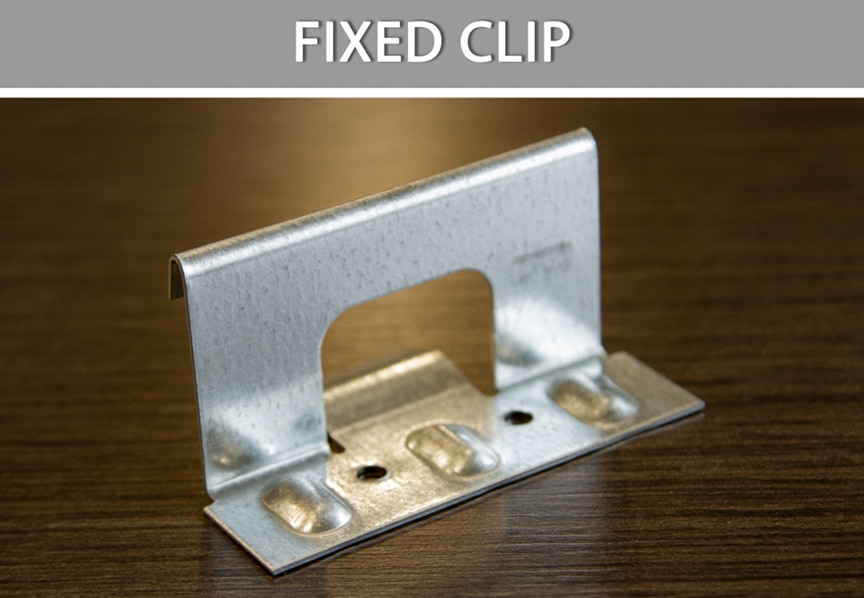
What it is: A fixed clip is exactly what it sounds like: A clip that attaches to the male leg of the panel and is then fastened directly into the substrate or roof deck and is fixed in place. This type of clip is fixed in place, does not have a slider, and does not expand or contract with the roof panels.
When it’s used: Fixed clips are suitable for use in snap-lock systems (non-fastener flange/nail down systems) or in short length mechanically seamed systems. Most engineered snap-lock panel systems are designed to be able to expand and contract independently, as the panels are not pinned to the structure directly through the metal to the roof deck. Fixed clips also work with short length mechanical systems because thermal movement isn’t is a significant concern for panels under 20 feet in length. Mechanically seamed systems with long panel runs should not use fixed clips.
Other considerations: One of the most significant advantages of installing fixed clips is that they are cheaper than expansion and contraction clips, which should be noted in the contractor’s quote or bid. Fixed clips also can be a useful component on longer panel runs or barrel roofs when you want to intentionally pin the panel in a particular location to force expansion and contraction to go in two directions (versus just towards the eave in a typical installation).
Floating Clips
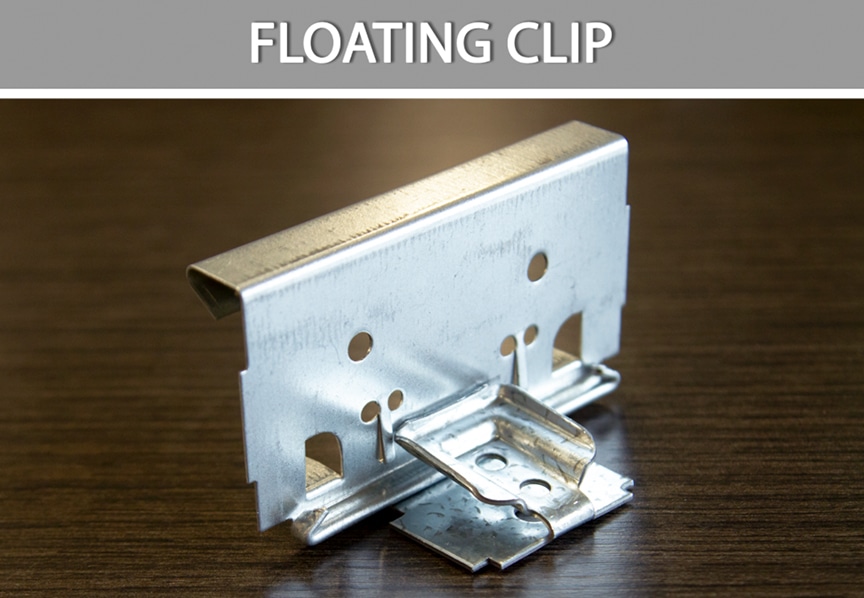
What it is: A floating clip is a clip that floats or raises the metal panel off of the substrate about a half an inch or an inch. Floating clips can expand and contract, or it can be installed as a fixed clip as well.
When it’s used: Usually, floating clips are installed in open framing applications (mechanically seamed systems) to create a space for compressed blanket insulation. If you aren’t using blanket insulation, floating clips can help reduce noise and purlin chatter that can occur when there isn’t adequate space between the purlin and the panels.
Other considerations: One of the disadvantages to using a floating clip is that since you float the panel an inch or a half an inch above the surface, you will have to adjust the flashing trim to accommodate for the gap. To reduce the chance of oil canning and other potential metal roof problems from occurring, installers will have to create a level surface for the panel to be installed, which is more time consuming, labor intensive, and expensive. Also, just as a standard fixed clip, a floating fixed clip is not recommended for mechanically seamed panels over 20 feet.
Batten Clips
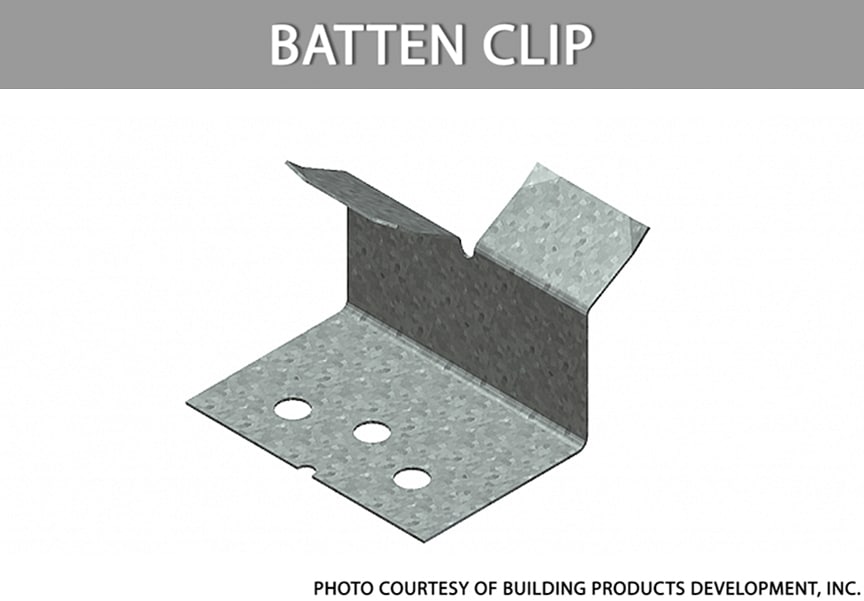
What it is: Batten clips are installed between two adjacent male legs (there are no female legs with batten profiles) on each side of the panel. Once the batten clip is fastened down to the substrate, a batten cap that goes over both adjacent panel edges locks onto the clip on both sides and either snaps on or is mechanically seamed into place.
When it’s used: Batten clips are solely used for batten panel systems, which are also referred to as tee seams and snap caps.
Other considerations: With a batten clip, expansion and contraction are possible, especially if the panels are not mechanically seamed together. It’s important to follow the manufacturer’s instructions when using a batten clip, or any clip really, as it could lead to the failure of a roofing system if incorrectly installed. Also, like fixed clips, batten clips are cheaper than expansion and contraction clips.
Cleats
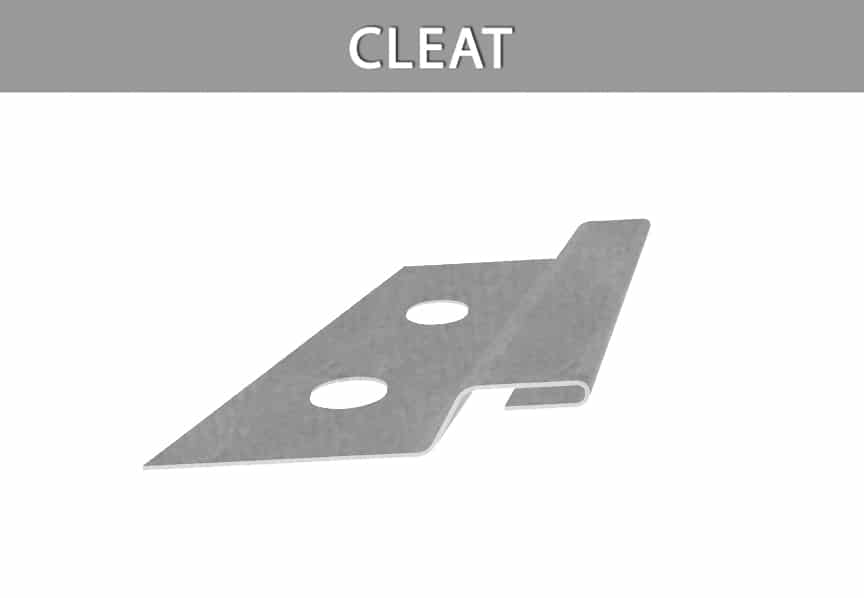
What it is: Cleats are the clips used to anchor down a metal wall system. Think of it as a flat fixed clip that attaches onto the male leg of the wall panel, gets fastened to the wall substrate, and then the female legs goes over the clip to snap or lap into place.
When it’s used: Cleats are usually seen in wall systems. For an example of how a cleat is used, take a look at the SMI WAV Panel Profile.
Other considerations: Depending on what type of wall panel system you are installing, cleats can allow for expansion and contraction of the wall system because the panels are not directly pinned to the structure. Cleats are also used throughout metal roof (valley detail) and flat roof metal trim installations. We want to make a clear distinction here that we are specifically referring to cleats used in wall applications.
Manufacturers of Metal Roofing Clips
Like most products, many different companies manufacture clips and cleats used for metal roofing and wall systems. For reference, here are a few of the most popular:
- Schulmeister Metal Products Inc.
- SFS intec
- BPD – A Logan Stampings Company
- Clip Finder – BPD has a feature on their website called Clip Finder where you can look up the correct fitting clips based on profiles offered by rollforming companies (including New Tech Machinery). Even though the clip fits, make sure to check with the panel manufacturer for applicable engineering for the system.
- AMSI Supply
Advantages and Disadvantages of Using Clips
We think it’s important to give you the complete scope of what using metal roofing and wall system clips/cleats entails, which is why we want to run through some of the most notable advantages and disadvantages of using clips.
Advantages of Using Clips
- Thermal movement/no pinned panels – As mentioned, when you restrict the expansion and contraction needed for proper thermal movement of a metal panel, you can run into problems, such as oil canning, fastener withdrawal, increased noise, and other issues. Using the correct clip that is correctly installed is one of the best ways to avoid thermal movement issues.
- Aesthetically pleasing – Standing seam metal roofing is becoming more and more popular in architectural applications because of its modern and clean look. And since clips are concealed under the panel, you don’t have to worry about compromising the sleek look you might be looking for.
- Engineered systems available – Without using a metal panel system that requires clips, it’s challenging to get a concealed fastener/flange metal roofing system to pass the rigorous testing that engineered metal roofs go through, as all of the parts making up an engineered metal roofing system are vital pieces that can’t be forgotten.
- Variety of options to choose from –While the type of clip is pretty strict based on the profile you’re installing, the sizing (height and width) of the clip varies dramatically. No matter what size, you’ll be able to find a clip that will fit your application.
Disadvantages of Using Clips
- Contingent on installation – We’ve been mentioning this throughout this article, but we want to reiterate the importance of correct clip installation. If one or more mistakes are made when installing the clips, it could lead to failure of the whole metal roof or wall system. That’s why if you’re an architect or building owner, choosing a reputable and qualified roofing contractor is one of the most important tasks.
- More expensive – Keep in mind: Clips are another expense. If the budget is already tight and you think you might not be able to buy clips, it may be worth looking into an exposed fastener metal roofing system, fastener flange system, or some other material that doesn’t require clips. Additionally, along with the clips is the cost of fasteners that must also be accounted for.
- Time-consuming and labor-intensive – Installing clips can prolong an installation because installers will need to fasten each one and make sure the spacing is correct. This slower process could also lead to a higher price.
Final Thoughts on Metal Roofing Clips & Cleats
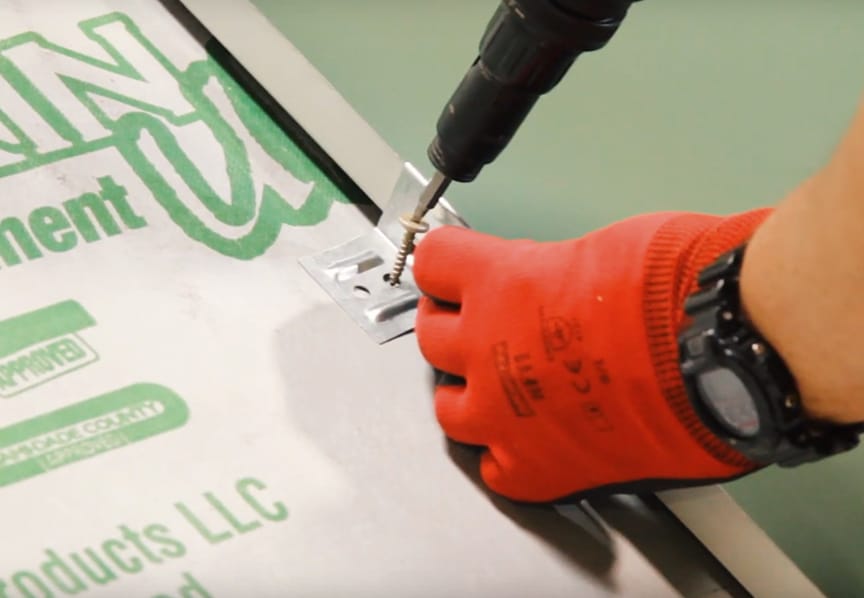
All-in-all, clips are an integral part of a metal roofing system and should not be overlooked during the installation process. If you ever question what type of clip you should use, always ask for the manufacturer’s recommendations for the profile you’re installing.
To recap, there are five clip types for different metal roof systems:
- Expansion and contraction clips – Used in long-run mechanically seamed systems
- Fixed clips – Used in snap-lock systems and short-run (under 20 feet) mechanically seamed systems
- Floating clips – Used in open framing applications
- Batten clips – Used for batten profile (tee seam and snap cap) applications
- Cleats – Used in metal wall systems
At Sheffield Metals, we’ve been distributing metal coil, accessories (including clips), rollforming machines, and engineered roofing and wall systems for nearly 20 years. In fact, all of our engineered systems have recommended clips, which have been tested and proven to perform in extreme weather situations.
For questions about clips or any other part of a metal roofing system, contact us today to speak with our knowledgeable and helpful technical department!
